The five members of Ireland’s first Paralympic team understood the powerful symbolism of travelling to the Olympic venue to showcase their abilities.
The four men and one woman who made up Ireland’s team to the first Paralympic Games in Rome in 1960 came from very different backgrounds – a publican, a priest, a carpenter, an electrician and a former socialite. But what they had in common was more than their wheelchairs and sporting aptitude, it was their experience of a completely new type of rehabilitation that focused on competitive sport.
Oliver Murphy
Eighty-six-year-old Oliver Murphy from Drogheda, the only surviving member of the team, thinks of Rome 1960 as a turning point in his life. "I've said this so often, but when I came back, I was way up here – and I never came down."
The inaugural Games were open to athletes in wheelchairs only, a criteria that didn’t broaden until 1976. “We were the central attraction. You thought, ‘What the hell, you’re in a wheelchair, that doesn’t matter. Forget about the things you can’t do.’”
Murphy had been using a wheelchair for little more than a year at the time of the Games, having been injured while working as an electrician the previous summer. Under a new government initiative, he had been sent to the National Spinal Injuries Centre at Stoke Mandeville in the UK. At Stoke, a German-Jewish émigré, Dr Ludwig Guttmann, was pioneering an approach to rehabilitation that centred on building strength and self-esteem through sporting activities and competitions, such as archery. "It was all about getting back to life," says Murphy, who remembers the physiotherapist telling him, "No slacking! It's for your own good!"
Guttmann's International Stoke Mandeville Games Federation was the organiser of the Rome Games, and though it was only retrospectively that they became known as the Paralympics, the historical significance of staging Games for wheelchair users alongside the Olympics was widely appreciated.
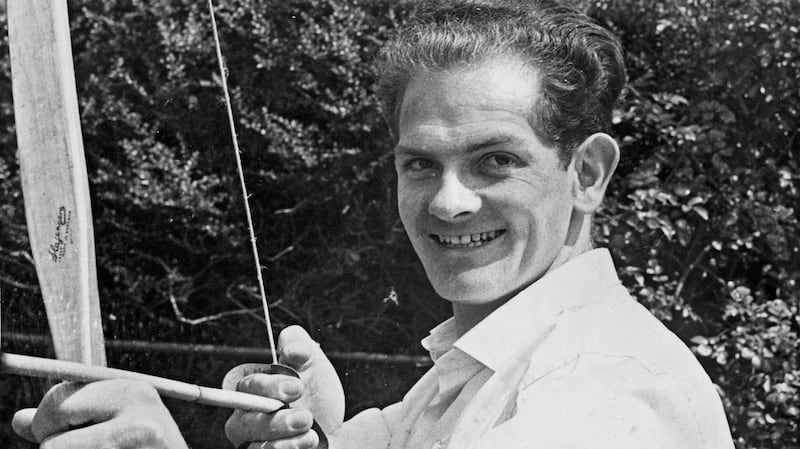
Nonetheless, there were complications in sharing the Olympic Village accommodation, which had been built on stilts. “There was no ground floor and no lift. We said, ‘My God! How are we going to manage here?’ So, they put plywood on the steps, and there were army personnel on duty all the time, and they pushed you up.”
Murphy came sixth in his archery event and competed at three subsequent Paralympics, including Tokyo 1964 where he tied for bronze in weightlifting. "Thankfully by Tokyo, lessons had been learned and we were housed in bungalows."
He believes he has now lived longer as a wheelchair user than anyone in Ireland and says he feels "very lucky to be able to see the Games in Tokyo again, 57 years later".
Fr Leo Close
When Drumcondra-born Leo Close arrived in Rome in September 1960, he was treated as a celebrity by the Italian press, not because he was captain of Ireland's team, but because a year earlier he had become the first wheelchair user in the world to be ordained a Catholic priest.
It now seems a barbaric story. In order to be ordained, Close, who was paralysed from the waist down, had been made by the Vatican to prove he could stand to say Mass. This involved propping up his legs with callipers, hoisting himself up and hooking his belt on to a custom-made frame.
While in Rome, 25-year-old Close was invited to say Mass (standing) in St Patrick's Irish Church with a photographer looking on. He was also given a private audience with Pope John XXIII, after which he was brought to the Vatican balcony to greet other athletes.
Close had been paralysed on holiday in France four years earlier when in fog he walked off a bomb-damaged bridge. He was eventually transferred to Stoke Mandeville, where his sister, Bernie Grant, says Guttmann's focus on self-help and sport resonated with her ambitious brother.
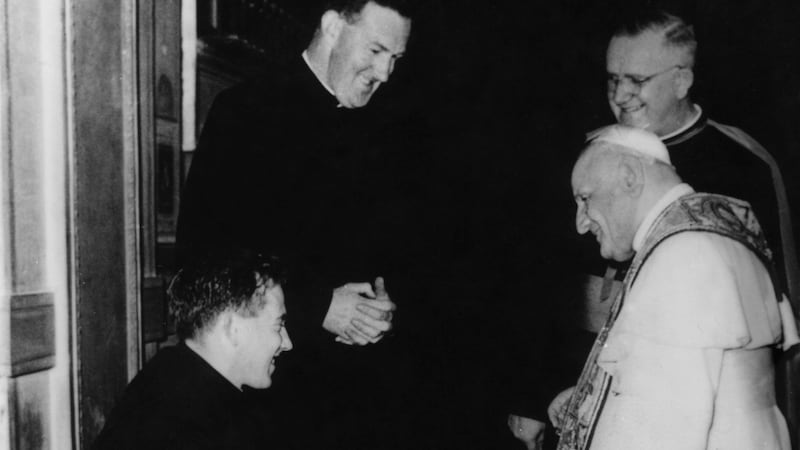
In Rome, Close competed in archery, table tennis, javelin and shot put. Talking to athletes from the other 22 countries – particularly the Dutch and Americans, who were better equipped – made Close determined to improve life for wheelchair users in Ireland. "He realised people were hidden away behind closed doors," says Grant. Two months later, he gathered a group of wheelchair users, including teammates Murphy, Kerrigan and Levins, and founded the Irish Wheelchair Association.
Close went on to win gold in javelin at the Stoke Mandeville Games in 1961 and represented Ireland again at Tokyo 1964. He then took up a post in New Zealand, promoting Paralympic sport there, and competing for his adopted nation in the 1968 and 1972 Games.
Jack Kerrigan
The photograph of Jack Kerrigan boarding the plane to Rome shows him being carried up the stairs by volunteers, a pipe hanging from the side of his mouth while he grins at the photographer above. It's not the sort of image we associate with Paralympians today, but despite the less-than-ideal boarding arrangements, Kerrigan's warmth and humour come across in what his wife Rosemary Kerrigan describes as his "very vocal eyes".
"From the stories Jack told me, the Games were more relaxed than people might imagine today. The fun was part of it. Apparently, they were supplied with a lunch pack every day and, being Italy, it always included 'vino'."
Oliver Murphy remembers Kerrigan insisting the wine was “only harmless stuff” and drinking it before a game of “dartchery” [similar to darts but with a bow and arrow]. He can still visualise Kerrigan looking around for the man with “the little tray of strong coffees”.
Kerrigan had been a wheelchair user for over a decade by Rome 1960. Paralysed in a diving accident when he was 21 and working as a carpenter in Scotland, he had returned to his home in Bundoran on a stretcher. Though his family encouraged him to socialise, he later wrote of how he struggled with "feeling like an invalid".
Kerrigan’s life changed when a friend arranged for Fr Leo Close to visit him in July 1959. Close was driving a car with hand controls and was visibly stronger than Kerrigan. Fitness brought freedom, Close explained, and they agreed Kerrigan had to get to Stoke Mandeville to learn for himself.
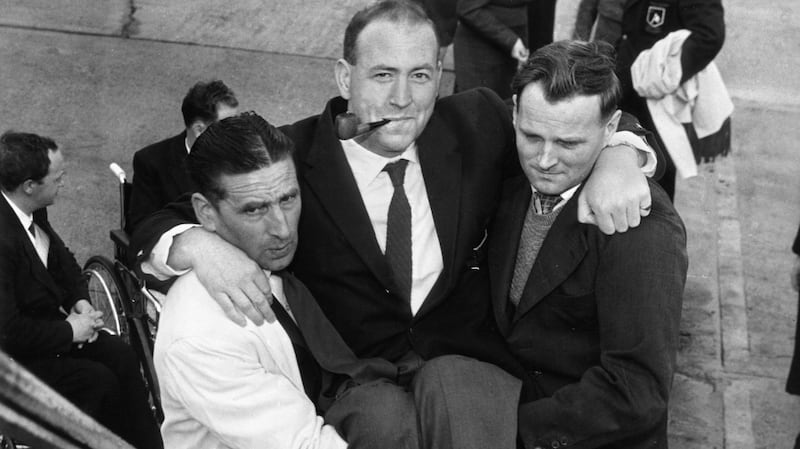
In February 1960, Kerrigan began what he would describe as “six of the happiest months of my life” at Stoke. He later told Rosemary of the moment the therapist tipped him into the swimming pool. “To his amazement he didn’t sink, he actually floated and realised he could do it!”
Kerrigan came joint third in men’s breaststroke (class C2) in Rome but lost out on a medal due to a technicality. He became increasingly passionate about sport, giving up smoking and following a strict diet in order to qualify for Tokyo 1964 and Tel Aviv 1968.
Jimmy Levins
Jimmy Levins, who competed in club throwing, was a later addition to the Rome team, selected after the official team announcement by the Rehabilitation Institute.
Brought up in Drogheda, Levins's early life was typical of his generation. He married a local girl, Josie Clarke, in the early 1950s and together they went to England to make their fortune.
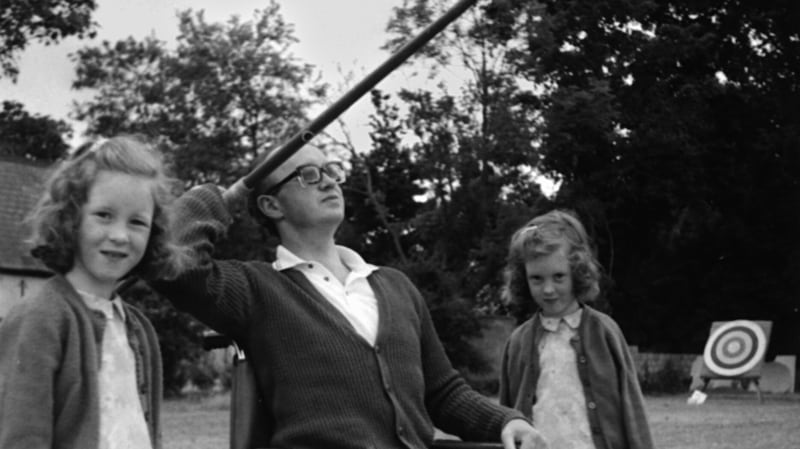
Not long afterwards, Levins was working as a steel roofing erector when a fall left him with a spinal injury. He was transferred to Stoke Mandeville, and Josie's brother, Michael Clarke, recalls how Josie got a job in the kitchens so she could stay close to her husband while he was being rehabilitated.
When Levins received compensation, he bought The Thatch pub on the Donore Road in Drogheda. A gregarious character, he trained his two dogs, a German shepherd and boxer, to pull his wheelchair along the country roads. “The dogs got distracted by a cat on one occasion and Jimmy ended up in a ditch,” recalls Oliver Murphy. The couple later moved to The Market Bar in Drogheda town, where Levins devised a pulley-system lift in the backyard to get him to the upper floors.
Rome 1960 was Levins’s only Paralympics, but he remained a sports enthusiast and ran regular fundraisers to support the fledgling Irish Wheelchair Association.
Joan Horan
Joan Horan, the only woman on the team, won Ireland's first two Paralympic golds, in archery and in women's 25m freestyle swimming (class C2).
In an interview with The Irish Press on November 4th, 1960, she described how on arrival in Rome, airport staff had mixed up the team’s wheelchairs, assuming one was the same as another. “You should have heard the outcry from the five of us. We nearly rioted on the spot.”
It’s an anecdote that resonates today. Horan was emphasising that the teams’ wheelchairs were not pieces of luggage, they were customised tools designed to maximise independence and sporting success.
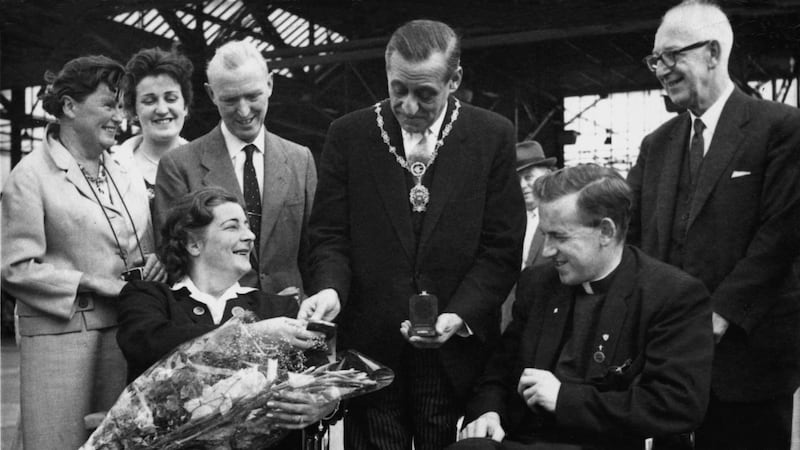
Forty-two-year-old Horan, who was married with two sons and known in Dublin social circles, was resident in the Mater hospital at the time of the Games. She had spent lengthy periods confined to bed in the Mater and at the National Hospital, Queen's Square, London, and had undergone rehabilitation at Stoke Mandeville, where she had taken up archery and swimming.
Having won two golds at the Stoke Mandeville Games in 1959, she was an obvious choice for Rome. Volunteers from the Knights of Malta collected her from the Mater each morning and brought her to Tara Street Baths, which Dublin Corporation allowed to open an hour early for her training sessions.
When Horan and her teammates returned to Dublin Airport on September 29th, 1960, they were greeted by dignitaries, including Maurice Dockrell, TD, Lord Mayor of Dublin, who commented that, relative to team size, "no other country got such a high proportion of gold medals". Team manager Frank Cahill added further praise: "It cost £68 a head to send the Irish team, compared with £686 a head for the Australian team of 18." (The Irish Times, Friday, September 30th, 1960).










